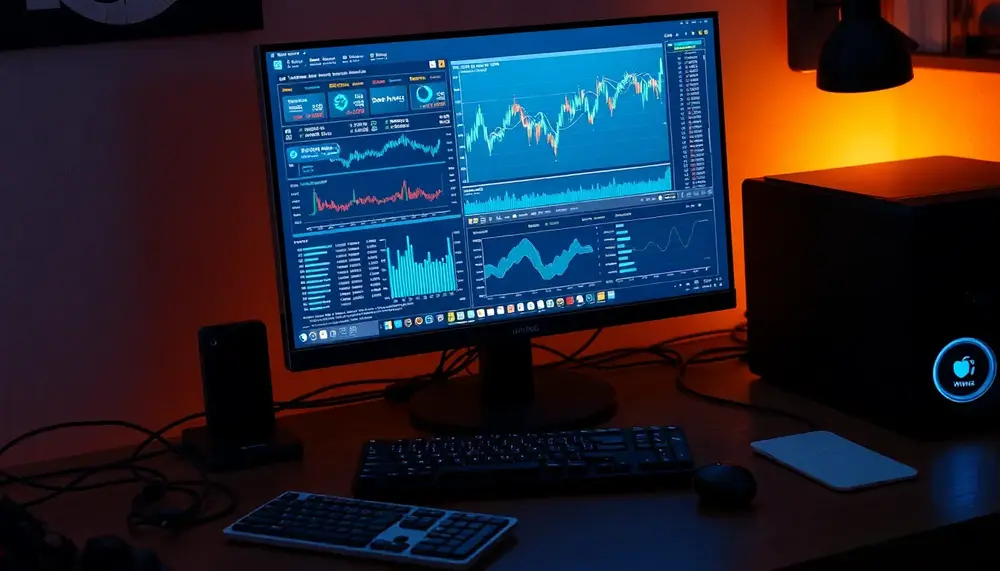Confirmation
Confirmation
Confirmation is a vital term you'll come across frequently in the world of Bitcoin Mining. So, let's break this concept down into simple language to understand its role in the overall process.
Understanding Confirmation in Bitcoin Mining
In essence, confirmation refers to the action in which a Bitcoin transaction is verified and then added to the Blockchain, the public ledger of all Bitcoin transactions. Each transaction needs a certain number of confirmations to be considered as valid.
How Does Confirmation Work?
The process of confirmation begins when a Bitcoin transaction takes place. Miners, those individuals who take part in mining Bitcoins, then pick up that transaction information. They try to solve a complex mathematical problem. This is known as Proof of Work.
To solve the problem, miners invest computational power. The first one to solve it adds the block of transactions, including the one in question, to the blockchain. This process is what we call confirmation. And the confirmed block cannot be altered or removed - it's permanent.
The Importance of Confirmation
Confirmation is crucial for preventing "double-spending". This term means that someone spends the same Bitcoin twice. Confirmation ensures that once you've spent a Bitcoin, it is marked as 'spent' in the ledger, stopping you from spending it again.
Apart from that, confirmation also reinforces the trustworthiness of the entire Bitcoin network. It ensures all transactions are recorded and tamper-proof. The more confirmations a transaction has, the more secure it is considered.
Waiting for Confirmation
When dealing with Bitcoin transactions, you'll often see phrases like "waiting for confirmation". It usually needs multiple confirmations before the recipient can consider the transaction complete. The standard number is six confirmations.
Confirmation time varies, but usually, it takes about 10 minutes for a new block to be added (one confirmation). But this time can vary based on network congestion and mining difficulty.
In summary, confirmation is a fundamental part of Bitcoin mining and transactions. It helps ensure security, prevent fraud and maintain transparency within the Bitcoin network.
Blog Posts with the term: Confirmation

Setting up a mining pool involves configuring the correct URL and port settings to ensure efficient and secure operations, with considerations for cryptocurrency type, geographical location of pools, reputation, fees, supported coins, and security protocols. Understanding commonly used ports like...

This guide provides a comprehensive overview of the USDT mining miner withdrawal process, from setting up your mining account to ensuring secure and efficient withdrawals. It includes detailed steps for initiating withdrawals, troubleshooting common issues like delays or incorrect wallet...

When cashing out crypto from mining, choose your payout coin wisely by considering transaction fees, market volatility, liquidity, and future potential; also understand minimum withdrawal requirements to ensure efficient transactions....

Infinity Hash is a cryptographic hash algorithm designed to optimize cryptocurrency mining by enhancing speed and security, ensuring data integrity through unique hash values. Despite its benefits like high security, efficiency, scalability, reduced collision risk, and future-proofing against threats such...

The article provides a comprehensive guide on how to mine Monero using Nanopool, covering the setup of a Monero wallet, creating an account on Nanopool, and configuring mining software like XMRig. It emphasizes Monero's privacy features and decentralized nature while...

A mining pool wallet acts as a digital piggy bank for storing and managing cryptocurrency earnings, providing security features like encryption and two-factor authentication to protect assets. When choosing such a wallet, consider factors like user accessibility, transaction fees, costs,...

ETH mining withdrawal involves transferring mined Ethereum from a mining pool to your personal wallet, which is essential for security, liquidity, usage flexibility, and ownership. To withdraw ETH successfully, log in to your mining pool account, verify your balance meets...

Litecoin mining involves earning LTC through computational work, and withdrawing these rewards requires understanding wallet compatibility, transaction fees, minimum withdrawal amounts, and security. Successfully transferring Litecoin from a mining pool to your personal wallet necessitates setting up a compatible wallet,...

XRP, created by Ripple Labs in 2012, is designed for fast and cost-effective cross-border transactions using a semi-centralized ledger maintained by independent validator nodes. Unlike Bitcoin and Ethereum, XRP cannot be mined as all its tokens were pre-mined at inception;...

XRP, created by Ripple Labs in 2012, is a digital currency designed for fast and low-cost international payments using the XRP Ledger (XRPL), which employs a consensus protocol instead of mining. Unlike mineable cryptocurrencies like Bitcoin, all XRP tokens were...

Kaspa is a decentralized cryptocurrency that uses the KHeavyHash algorithm and features a blockDAG structure for faster transactions and scalability, making it attractive for mining. Investing in Kaspa mining involves selecting efficient hardware and configuring your rig to maximize efficiency...

The article explains the importance of Ethereum block mining time, which is typically around 12 seconds, and its impact on transaction speed, network security, and scalability. It also details how this time is determined by factors such as validator performance...

A crypto mining license is essential for legal and secure operations, providing legitimacy, compliance with regulations, access to resources like subsidized energy rates, and potential strategic advantages. The process of obtaining a license requires understanding the varying international and local...

Digibyte solo mining involves using your own hardware to independently earn Digibyte (DGB) coins, offering potential rewards but also challenges. The process requires selecting the right algorithm and hardware, setting up appropriate software, and possibly configuring a mining pool for...

